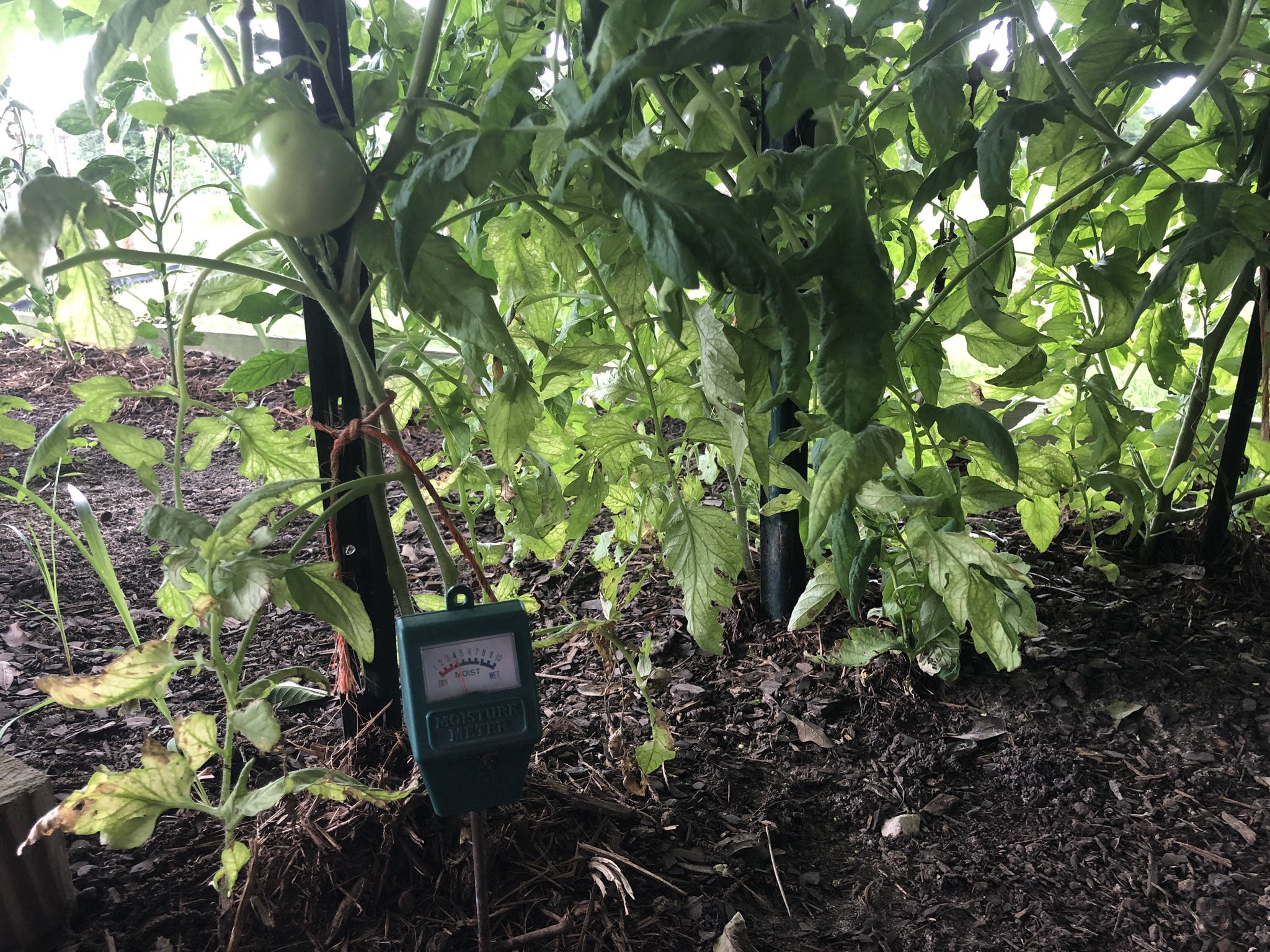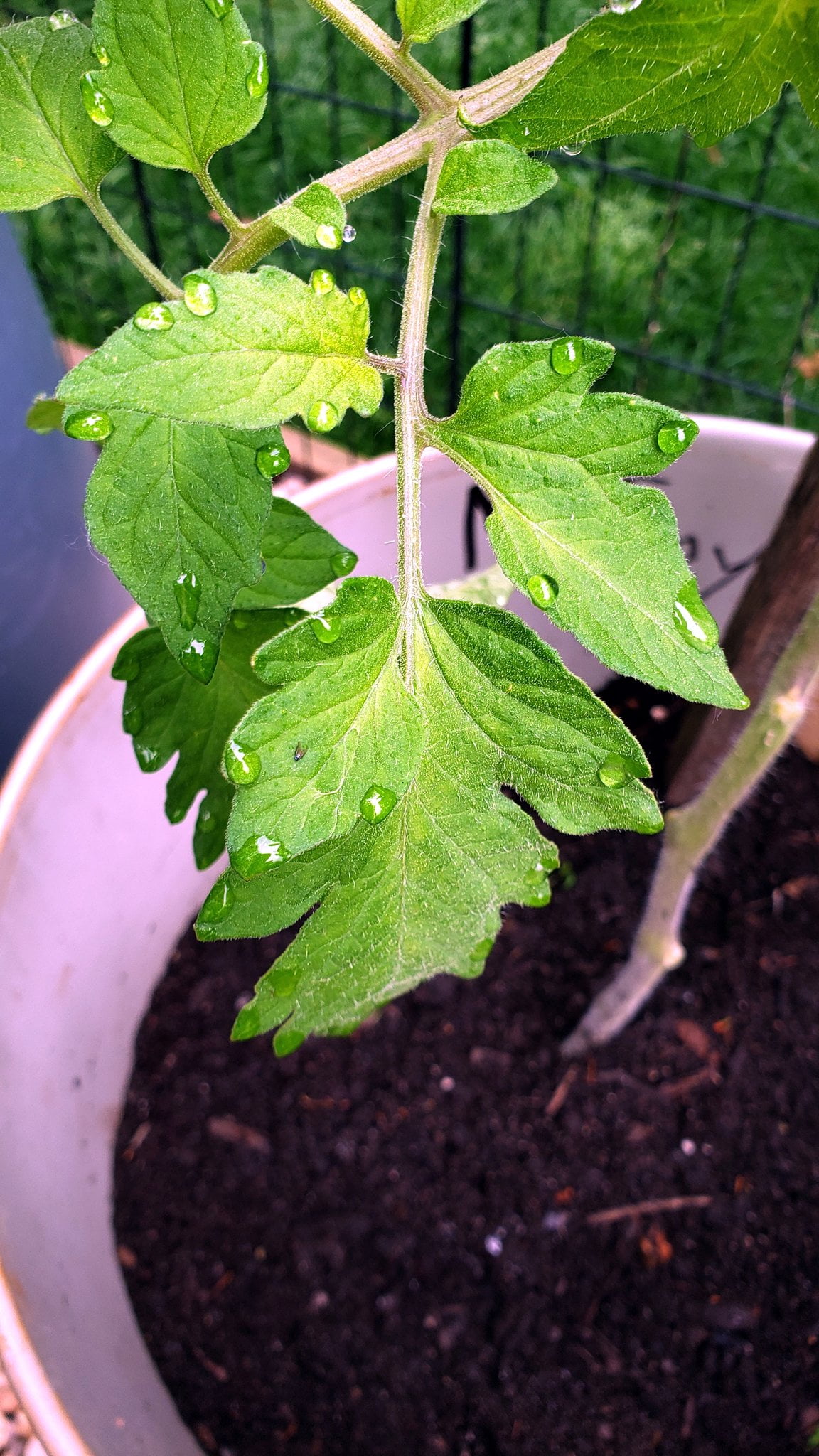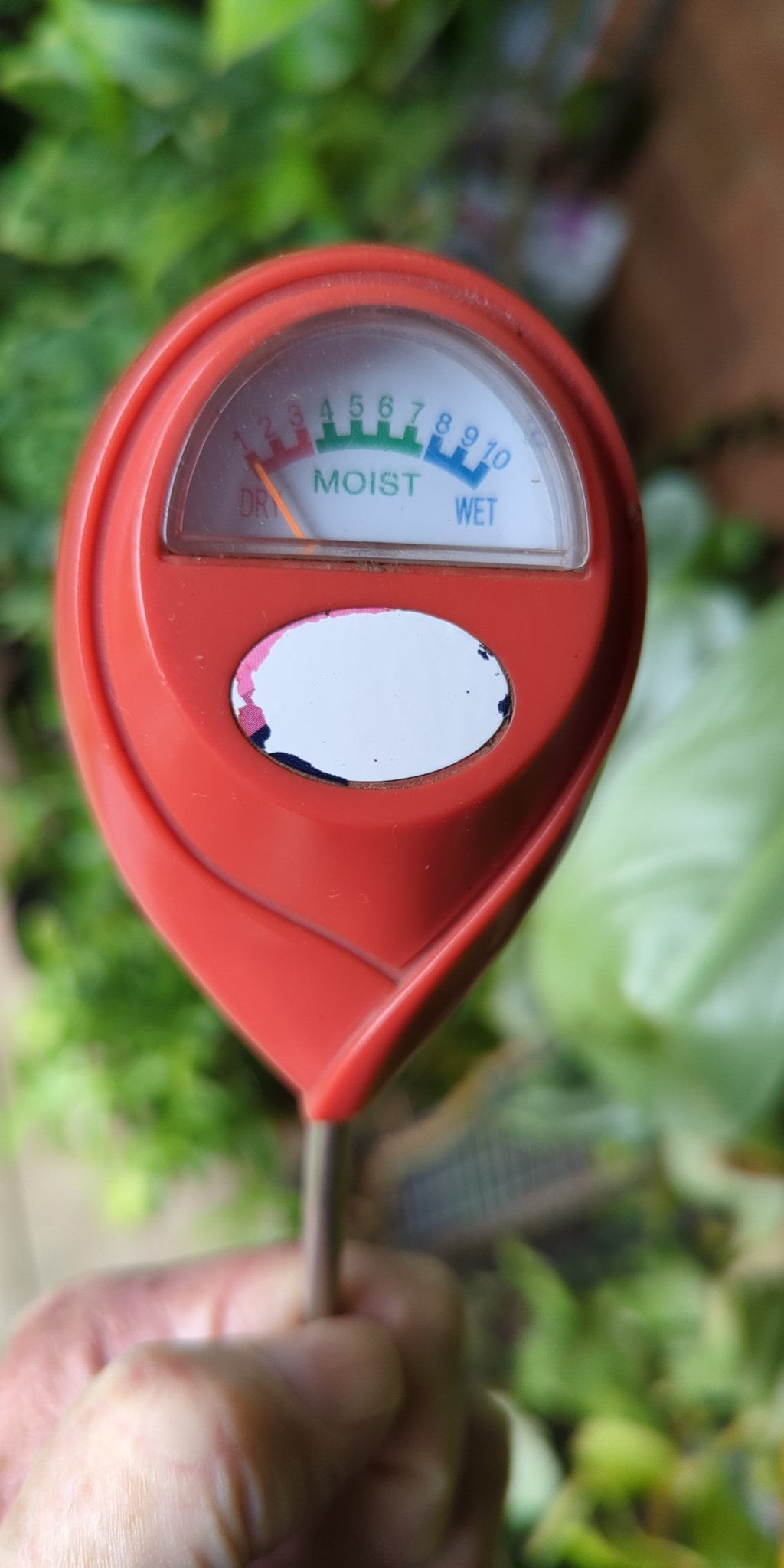
There’s nothing quite like the taste of a freshly plucked, sun-ripened tomato from your own garden. But, as any gardener knows, achieving that level of tomato perfection can be a tricky endeavor. One crucial element in this pursuit is the often-underestimated factor of tomato moisture. This is where the Tomato Moisture Level Meter enters the scene as the unsung hero of tomato gardening. In this comprehensive guide, we’re going to take you on a journey through the world of tomato cultivation, revealing the secrets of using the Tomato Moisture Level Meter to grow those perfect tomatoes you’ve been dreaming of.
Table of Contents
Understanding Tomato Moisture

Before we go into the nitty-gritty of the Tomato Moisture Level Meter, let’s first understand the science behind tomato moisture. Tomatoes are composed of over 90% water, which makes them exceptionally moisture-sensitive plants. It’s crucial to grasp this water content for successful tomato growth.
Why Moisture Matters
Proper moisture levels are vital because they determine the plant’s ability to absorb essential nutrients from the soil. When there’s too much moisture, the roots can’t access these nutrients; conversely, when there’s too little, the plant becomes dehydrated, stunting its growth and ability to photosynthesize.
Consequences of Poor Moisture Management
Tomatoes are pretty good at letting you know when they’re not happy with their moisture levels. Overwatering, or saturating the soil excessively, can lead to root rot, yellowing leaves, and a decrease in fruit quality. On the flip side, underwatering, when the soil dries out, results in wilting, stunted growth, and shriveled, unappetizing tomatoes.
Maintaining the right moisture balance is essential for ensuring your tomatoes flourish.
What is a soil moisture meter for tomato plants?

At its core, a Tomato Moisture Level Meter is a handy gadget designed to measure the moisture content in your soil. It typically consists of a probe that you insert into the ground, which then relays information about the moisture level. These meters come in various shapes and sizes, from simple analog tools to more sophisticated digital devices.
Components and Design
To use this tool effectively, it’s essential to understand its components and design. Most moisture level meters have a probe or sensor that goes into the soil and a display, which can vary from a simple analog needle to a digital screen. The probe is equipped with sensors that detect moisture levels in the soil and relay that information to the display.
How to Use Your Tomato Moisture Level Meter

Using this gadget is simpler than you might think. It’s a practical and user-friendly tool that requires no advanced technical knowledge. Here are the basic steps for operating your Tomato Moisture Level Meter:
- Insert the probe into the soil near the base of your tomato plant.
- Ensure that the probe reaches a sufficient depth to measure the moisture at the root level.
- Wait for the meter to stabilize and give you a reading. This reading represents the moisture level in the soil.
Benefits of Using a Tomato Moisture Level Meter
So, why bother with a Tomato Moisture Level Meter when growing tomatoes? Well, there are several good reasons to make it an essential part of your gardening toolkit.
Time and Effort Savings
The Tomato Moisture Level Meter saves you time and effort by taking the guesswork out of watering. No more randomly watering your plants and hoping for the best. With this tool, you can be precise, watering tomato plants only when necessary. This efficiency is particularly important in climates where water conservation is crucial.
Improved Tomato Health
By providing your tomatoes with the right amount of moisture, you’re promoting their overall health. They’ll grow stronger, produce better fruit, and be more resistant to diseases and pests. The result? Healthier plants and more mouthwatering tomatoes for you to enjoy.
Eco-Friendly Benefits of Using a Moisture Level Meter
Being eco-friendly and wallet-friendly often go hand in hand. Using a Tomato Moisture Level Meter allows you to achieve both.
- By reducing water waste and limiting the use of fertilizers and pesticides, you’re contributing to a more sustainable gardening practice.
- In addition to environmental benefits, you’ll likely see cost savings in your water bill, making your gardening efforts more economical.
Understanding the Ideal Moisture Level for Tomatoes
The ideal moisture level for tomatoes falls somewhere between soil that’s bone dry and soil that’s constantly wet. It’s in that Goldilocks zone where tomato plants can access the moisture and nutrients they need while still allowing excess water to drain away.
Using your Tomato Moisture Level Meter, you can determine the precise moisture level in your soil. Aim to keep it within this optimal range to ensure your tomatoes are as happy and healthy as possible.
Here’s how:
- Insert the probe into the soil near your tomato plant’s root zone.
- Allow the meter to stabilize and provide a reading.
- The reading will tell you whether the soil is too wet, too dry, or just right. Aim to keep it in the “just right” zone for the best results.
What should the moisture meter reading be for tomatoes
The optimal moisture meter reading for tomatoes typically falls within a specific range, as tomatoes have specific soil moisture requirements to thrive and produce high-quality fruit. To ensure your tomato plants are receiving the right amount of moisture, aim for a moisture meter reading between 30% and 70% on most moisture meters.
Here’s a breakdown of what these moisture levels mean for your tomato plants:
- Reading Below 30%: If your moisture meter indicates a soil moisture level below 30%, it suggests that the soil is too dry. In this case, your tomato plants are likely experiencing drought stress. You should water your tomatoes to bring the moisture level within the recommended range.
- Reading Between 30% and 70%: This is the ideal range for tomatoes. When your moisture meter reading falls within this range, it means that the soil has a good balance of moisture, providing your plants with the water they need without being overly saturated. This is the range you want to maintain for optimal tomato growth and fruit production.
- Reading Above 70%: If the moisture meter reading exceeds 70%, it indicates that the soil is too wet, and your tomato plants may be at risk of overwatering. Overwatering can lead to issues such as root rot and reduced fruit quality. In this case, you should adjust your watering schedule to allow the soil to dry out slightly.
Troubleshooting Tomato Moisture Issues
Even with your trusty Tomato Moisture Level Meter, there will be times when things don’t go as planned. Mother Nature has a way of throwing curveballs, and it’s crucial to know how to troubleshoot common tomato moisture issues.
Dealing with Dry Spells
Dry spells and droughts can be a tomato gardener’s nightmare. When there’s a lack of rain or you’re dealing with arid conditions, your tomatoes are at risk of drying out.
Coping with Droughts and Dry Weather
During dry spells, you’ll need to provide extra care to your tomatoes to prevent them from wilting and suffering drought stress. Here are some strategies to consider:
- Deep Watering: Ensure that your plants receive deep and thorough watering to reach their root zones.
- Mulching: Apply a layer of organic mulch around the base of your tomato plants to retain soil moisture.
- Shade Cloth: In extremely hot and sunny conditions, consider using shade cloth to protect your plants from excessive heat and evaporation.
Identifying Drought Stress in Tomato Plants
Drought-stressed tomato plants exhibit specific signs. It’s essential to recognize these symptoms promptly to address the issue. Look out for the following:
- Wilting leaves and drooping stems
- Dry and cracked soil
- Reduced fruit production and smaller tomatoes
Conquering the Sogginess
On the flip side, overwatering can be just as detrimental to your tomato plants as drought. It’s essential to prevent excessive soil saturation and the consequences that come with it.
Preventing Overwatering With Moisture Level Meter
Overwatering tomatoes can lead to root rot, yellowing leaves, and poor fruit quality. To avoid overwatering, consider the following tips:
- Use your Tomato Moisture Level Meter to gauge soil moisture accurately.
- Water deeply but less frequently to prevent waterlogging.
- Allow the soil to dry slightly between watering sessions.
If you notice signs of overwatering, take immediate action to adjust your watering routine. This might involve reducing the frequency of watering and improving drainage in your garden beds.
Maximizing Tomato Harvest With Moisture Level Meter
As tomatoes ripen and approach the point of optimal flavor and texture, they undergo specific changes in their moisture content. The Tomato Moisture Level Meter, which measures the moisture content in the soil, indirectly helps you gauge the moisture levels in the plants themselves.
Here’s a step-by-step breakdown of how you can use your Tomato Moisture Level Meter to guide your tomato harvest:
- Monitoring Soil Moisture: Before your tomatoes reach the harvest stage, you can use the meter to monitor the moisture levels in the soil around your tomato plants. At this point, your goal is to maintain an optimal moisture level, usually falling within the 30% to 70% range on the moisture meter.
- Adjusting Moisture Levels: As your tomatoes approach ripeness, you can adjust the moisture levels in the soil by controlling your watering routine. Ensuring that the soil remains within the ideal moisture range is crucial for flavor development and fruit quality.
- Harvesting at the Right Time: When your Tomato Moisture Level Meter indicates that the soil moisture is within the optimal range and you’ve fine-tuned the moisture levels leading up to the harvest, your tomatoes are ready to be picked.
- Flavor Development: Proper moisture management in the days or weeks leading up to harvest contributes to the development of that burst of juiciness and flavor you’re looking for in a ripe tomato. The combination of the right moisture content in the soil and the plant contributes to the tomato’s taste and texture.
Conclusion
Tomato Moisture Level Meter is a game-changer in the world of tomato gardening. It’s not just a gadget; it’s your gardening ally. By mastering the art of tomato moisture management, you’re on your way to becoming a tomato guru. Say goodbye to wilted, lackluster tomatoes and say hello to a garden full of plump, flavorful beauties. So, roll up your sleeves, get your Tomato Moisture Level Meter, and embark on your journey to tomato greatness.
